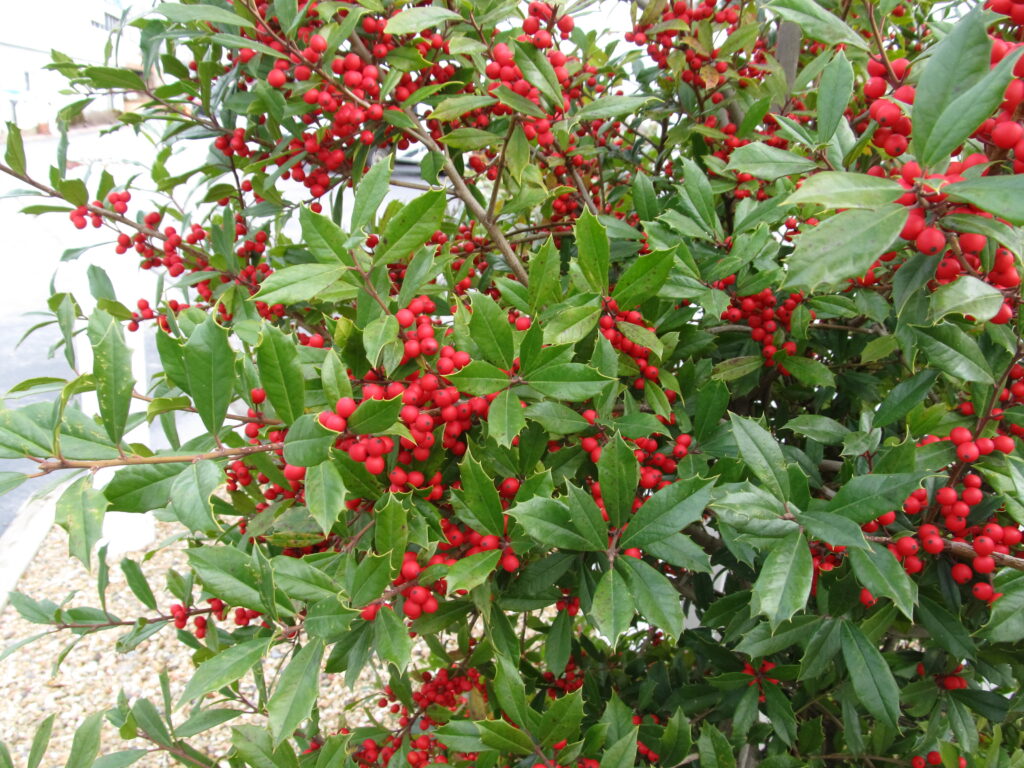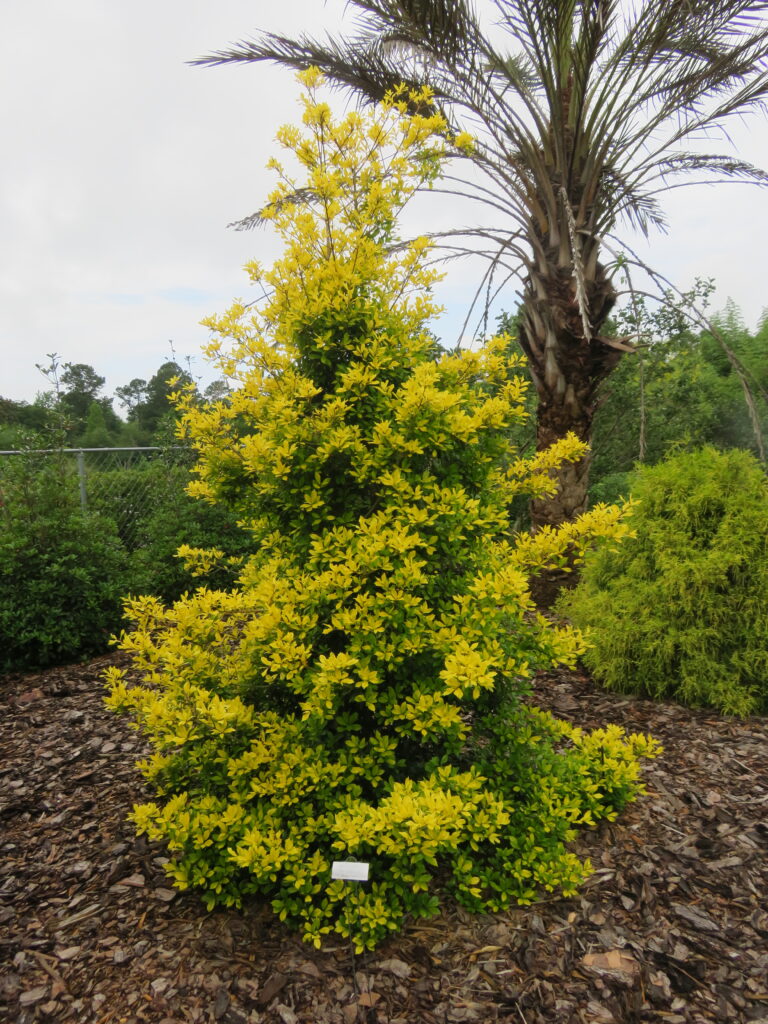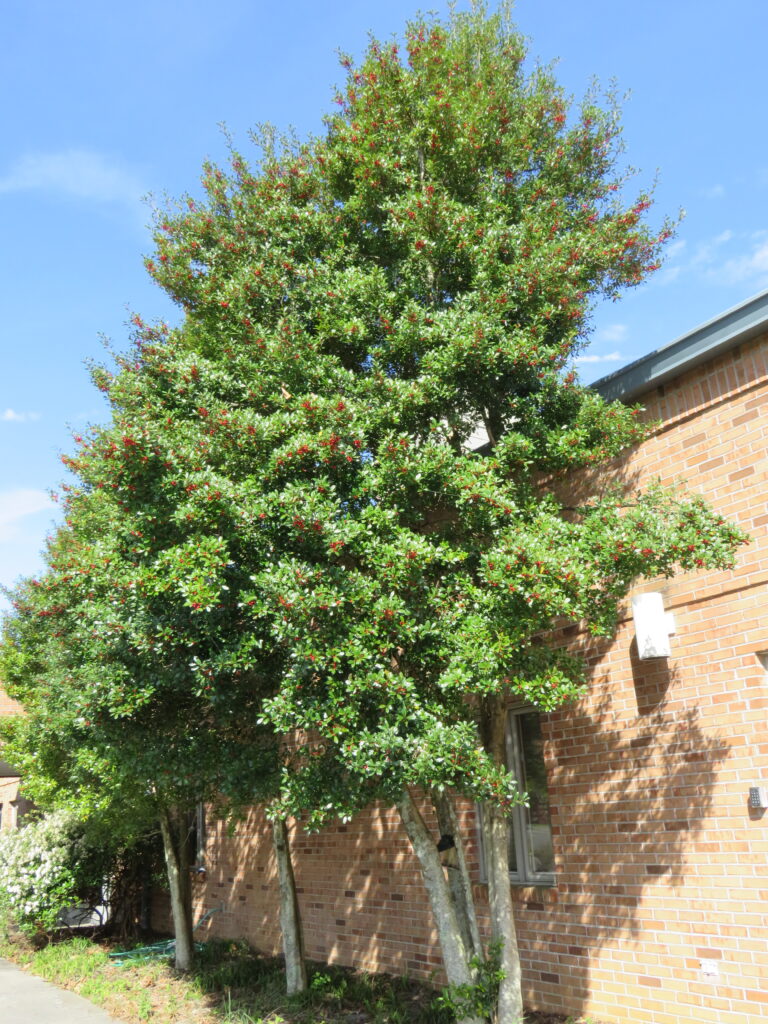
Foster holly (Ilex x attenuata) is an old holly favorite which has not lost its sizzle. Cultivars of Foster Hollies were selected by E.E. Foster of Foster Nursery in Bessemer, Alabama in the 1950s. It is utilized in a number of landscape options across the Southern Appalachian region (USDA zones 6 and 7), including in containers in zones 7 and 8.
Back in the 1940’s, five selections of Foster hollies were introduced by E. E. Foster of Foster Nursery in Bessemer, AL. Eighty years later, the berry producing variety, ‘Foster #2’, remains highly popular; it produces a bountiful yield of small bright red holly berries. Fruits continue to be effective throughout the winter and are an important food source for many birds. ‘Foster #4’ is its male pollinator mate, but in most locales, male American hollies (I. opaca) also pollinate Foster #2.

Foster hollies grows fast into small 12-30 tall trees or shrubs. They exhibit a strong vertical presence when utilized as specimen or foundation shrubs in front of tall edifices and on the corners of homes and apartment buildings. Foster holly is an excellent choice as a privacy screen.
For the artistically minded, fashion these hollies into almost any topiary plant form. Leaf spines are soft, not sharp as on some holly species. Female plants produce large quantities of berries. Cut boughs are decorative around the Christmas holiday period. Foster hollies are not utilized as foundation plants as they quickly outgrow their planting area (see photo below).
Unfortunately, Foster hollies are not commonly found in nursery commerce for sales. Ask local nurseries and full-service garden centers to source them for you.

Hollies (Ilex spp.) grow in a moderately acidic (pH 5.8 – 6.5), well-drained soil and in full to partial sunlight. Feed with a water-soluble acidic fertilizer such as Miracle-Gro™, Miracid™, or Hollytone®.

 Posted in
Posted in 
